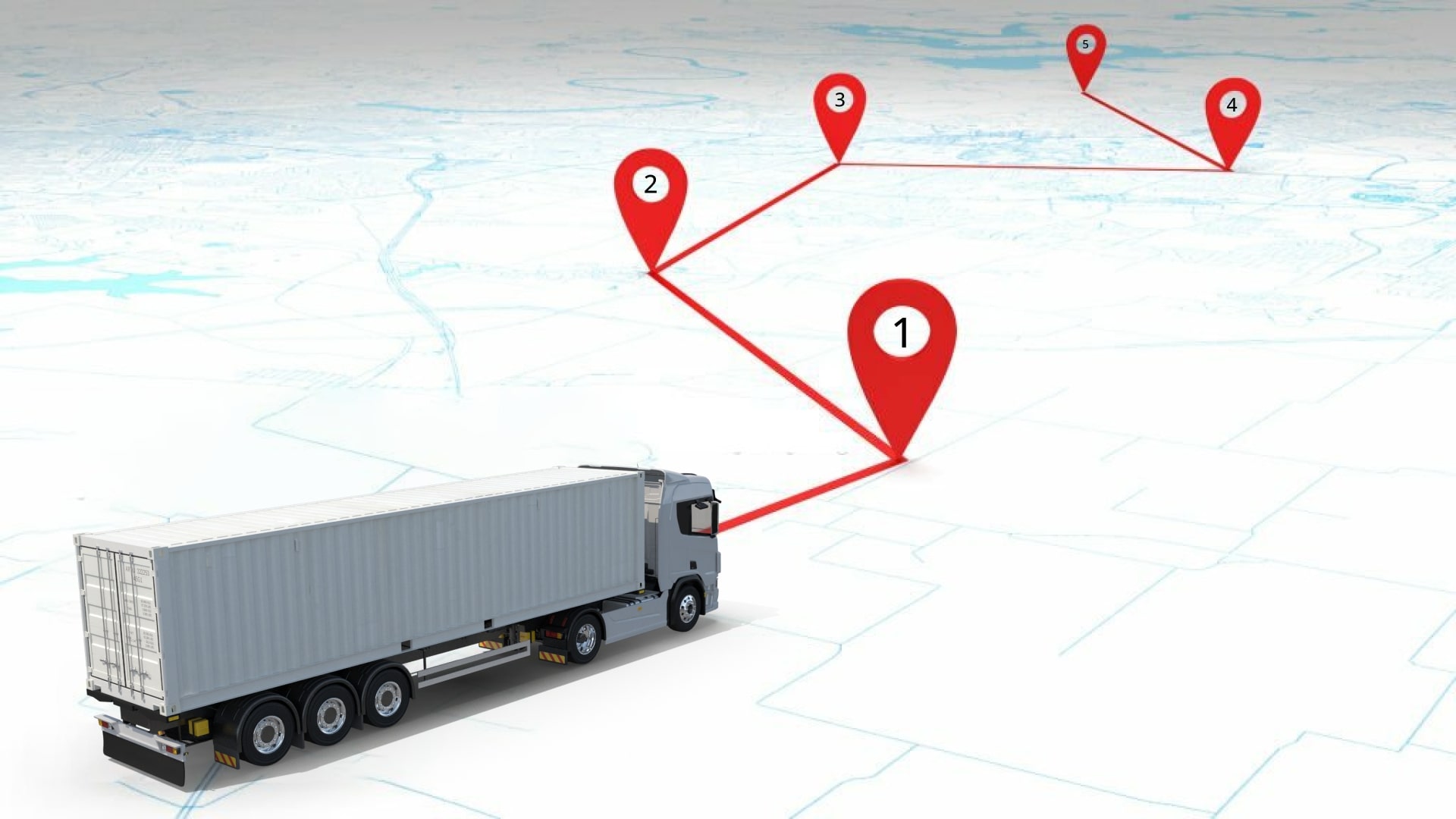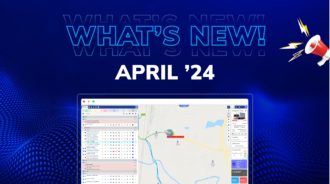In today’s fast-paced world, businesses and individuals alike are constantly seeking ways to optimize efficiency and streamline processes. One key area where significant improvements can be made is route planning. Traditional methods of mapping out routes manually are not only time-consuming but also prone to errors. Enter route planning software – a game-changer that is transforming the way we navigate our daily journeys. In this comprehensive guide, we’ll delve into the world of route planning software, exploring its benefits, features, and how it can revolutionize your operations.
What is route planning software?
Route planning is the process of determining the optimal path or course to reach a destination. It involves mapping out the most efficient route from a starting point to a specified endpoint, considering various factors such as distance, travel time, traffic conditions, and specific preferences or constraints. In essence, route planning aims to streamline travel by identifying the best way to navigate roads or pathways, whether for personal navigation, logistics, or business operations.
Traditional route planning often involved manual methods, such as using maps and hand-written directions. However, with the advent of technology, especially the development of route planning software and GPS navigation systems, the process has become more automated and sophisticated. Route planning software takes into account real-time data, including traffic updates, road closures, and alternative routes, to provide users with the most efficient and timely directions.
This technology is widely used in various industries, such as transportation and logistics, where optimizing routes can lead to cost savings, fuel efficiency, and improved delivery times. Additionally, individuals use route planning tools for everyday navigation, such as finding the quickest route for commuting or planning road trips. Overall, route planning is a valuable tool for enhancing efficiency and ensuring effective navigation from one point to another.
The Basics of Route Planning
Route planning software is a sophisticated tool designed to simplify the process of charting the most efficient paths from one location to another. Whether you’re managing a fleet of vehicles, organizing deliveries, or planning a road trip, this software can significantly enhance your route optimization efforts.
Why route planning is important in fleet management industry?
Route planning holds significant importance in the fleet management industry for several reasons, playing a crucial role in enhancing operational efficiency, reducing costs, and improving overall fleet performance. Here are key reasons why route planning is vital in fleet management:
-
Cost Savings:
- Fuel Efficiency: Optimized routes help minimize fuel consumption by identifying the shortest and most fuel-efficient paths. This leads to substantial cost savings, especially for fleets covering long distances.
- Reduced Maintenance Costs: By minimizing unnecessary mileage and wear and tear on vehicles, route planning contributes to lower maintenance costs, extending the lifespan of fleet vehicles.
-
Time Efficiency:
- Faster Deliveries: Efficient route planning ensures that drivers take the quickest paths to their destinations, reducing overall travel time. This is critical in time-sensitive industries where timely deliveries are paramount.
- Real-time Adaptability: Route planning software that integrates real-time traffic updates allows for on-the-fly adjustments, helping drivers avoid delays and stay on schedule.
-
Improved Customer Satisfaction:
- Timely Deliveries: On-time deliveries contribute to higher customer satisfaction. Route planning ensures that drivers arrive at their destinations promptly, meeting customer expectations and building trust.
- Accurate Arrival Estimates: Route planning software provides accurate arrival time estimates, allowing businesses to communicate precise delivery windows to customers.
-
Enhanced Safety:
- Risk Mitigation: Route planning takes into account factors such as road conditions and potential hazards. By avoiding risky areas, fleet managers can reduce the likelihood of accidents and enhance overall safety.
-
Compliance and Regulations:
- Adherence to Regulations: In the transportation industry, compliance with regulations is crucial. Route planning helps ensure that drivers follow prescribed routes, adhere to legal requirements, and avoid areas with restrictions.
-
Resource Optimization:
- Fleet Utilization: Efficient route planning enables better utilization of fleet resources. Companies can maximize the use of each vehicle, leading to a more cost-effective and sustainable fleet management strategy.
- Driver Productivity: By minimizing idle time and reducing unnecessary detours, route planning contributes to improved driver productivity, allowing them to complete more tasks within a given timeframe.
-
Environmental Impact:
- Reduced Emissions: Optimized routes contribute to a reduction in fuel consumption and, consequently, lower emissions. This aligns with sustainability goals and environmental considerations, reflecting positively on a company’s reputation.
In summary, route planning is a cornerstone of effective fleet management. It addresses key challenges, enhances resource utilization, and contributes to a more sustainable and customer-centric approach, ultimately benefiting both the fleet operators and their clients.
Key Features to Look For
When choosing route planning software, it’s crucial to consider the features that align with your specific needs. Look for real-time tracking, customizable route options, and integration capabilities with other business tools. These features not only save time but also contribute to better decision-making and overall operational efficiency.
Benefits of Route Planning Software
Time and Cost Savings
One of the primary advantages of using route planning software is the ability to save both time and money. By optimizing routes, you can reduce fuel costs, minimize travel time, and ultimately enhance your bottom line. The software’s ability to adapt to real-time traffic conditions ensures that your routes remain efficient, regardless of unexpected delays.
Increased Productivity
Route planning software empowers businesses to accomplish more in less time. Whether you’re a delivery service ensuring timely drop-offs or a sales team visiting clients, the optimized routes mean less time on the road and more time dedicated to essential tasks. This boost in productivity can lead to increased customer satisfaction and improved employee morale.
How Route Planning Software Works
Data Integration
Route planning software relies on data integration to function seamlessly. By syncing with various data sources such as maps, traffic updates, and user preferences, the software can generate the most efficient routes. This integration ensures that the routes provided are not only accurate but also tailored to specific needs, whether it’s avoiding tolls or prioritizing scenic routes.
Real-time Updates
One of the standout features of route planning is its ability to provide real-time updates. As conditions change – be it due to traffic, road closures, or weather – the software adapts on the fly, rerouting to ensure the most time-efficient journey. This adaptability is a critical factor in the software’s effectiveness and a key reason for its growing popularity.
Choosing the Right Route Planning Software
Assessing Your Needs
Before selecting a route planning software, it’s essential to assess your specific requirements. Consider the size of your fleet, the nature of your routes, and any unique features your business may need. Understanding these factors will guide you in choosing a solution that aligns with your goals and operations.
User-Friendly Interface
A user-friendly interface is crucial for the successful implementation of route planning software. Look for platforms that are intuitive, easy to navigate, and provide clear instructions. A software solution that your team can easily adopt ensures a smooth transition and maximum utilization of its features.
Conclusion:
In conclusion, route planning software has emerged as a transformative tool for businesses and individuals seeking to optimize their travel routes. By understanding the basics, exploring the benefits, and delving into how the software works, you can make informed decisions about integrating this technology into your operations. As you embark on this journey, remember to assess your needs and choose a user-friendly solution that aligns with your unique requirements. Embrace the power of route planning software and unlock new levels of efficiency in your daily journeys.
Frequently Asked Questions (FAQs)
- Can route planning software adapt to changes in real-time? Yes, modern route planning software is designed to adapt to real-time changes such as traffic congestion, accidents, or road closures. This adaptability ensures that fleet managers can make adjustments on the fly to optimize routes and minimize delays.
- How does route planning contribute to cost savings in fleet management? Route planning minimizes fuel consumption by identifying the most fuel-efficient paths, leading to significant cost savings. Additionally, it reduces maintenance costs by minimizing wear and tear on vehicles through optimized routes.
- What role does route planning play in customer satisfaction? Efficient route planning ensures timely deliveries, contributing to higher customer satisfaction. Accurate arrival time estimates provided by route planning software help manage customer expectations, building trust and loyalty.
- How does route planning address safety concerns in fleet management? Route planning takes into account factors like road conditions and potential hazards, helping drivers avoid risky areas. This proactive approach contributes to improved overall safety for both drivers and fleet vehicles.
- Is route planning only beneficial for large fleets, or can it be useful for smaller operations as well? Route planning is beneficial for fleets of all sizes. Whether managing a large delivery fleet or a small group of vehicles, optimizing routes leads to cost savings, increased efficiency, and improved overall performance.
- Can route planning software help with compliance and regulations in the transportation industry? Yes, route planning software can assist in compliance with regulations by ensuring that drivers follow prescribed routes, adhere to legal requirements, and avoid areas with restrictions. This helps fleet managers stay in line with industry regulations.
- How often should route plans be updated in fleet management? Route plans should be updated regularly, especially in industries with dynamic conditions. Real-time updates provided by route planning software allow for adjustments as needed, ensuring that routes remain optimized and aligned with current factors affecting travel.



